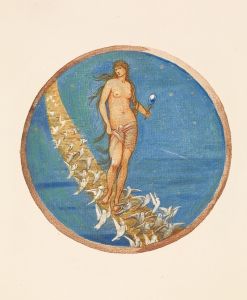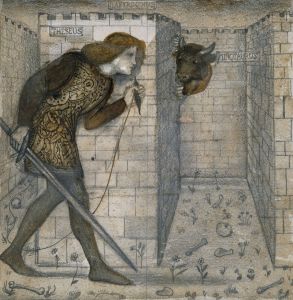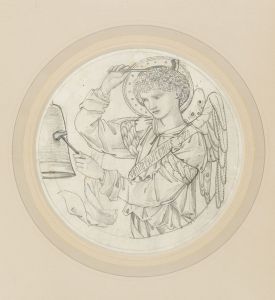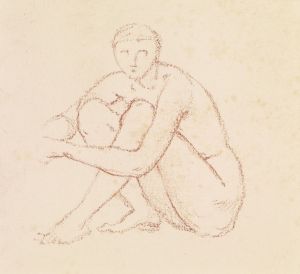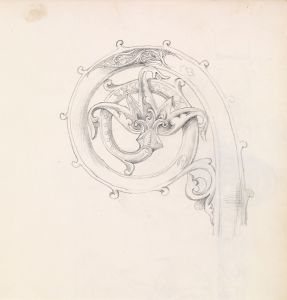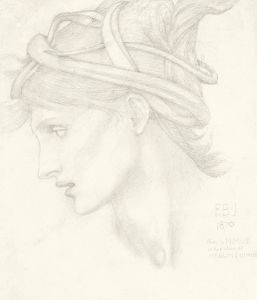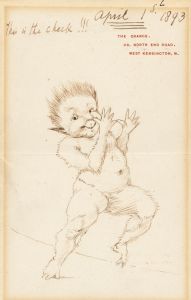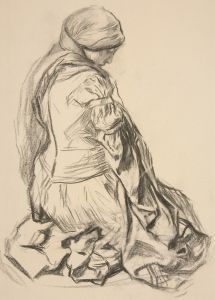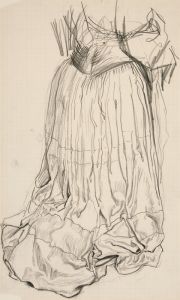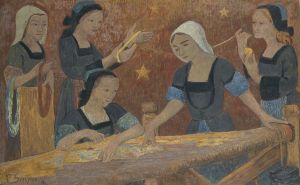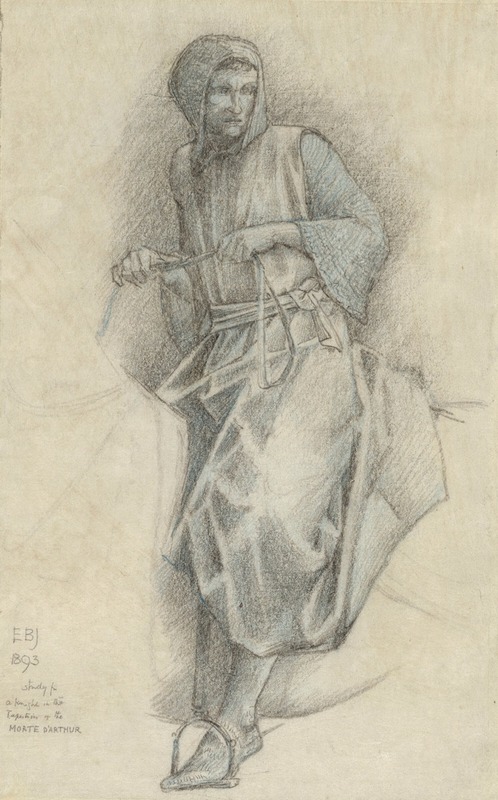
A study for Sir Ewain in the Holy Grail Tapestries
A hand-painted replica of Sir Edward Coley Burne-Jones’s masterpiece A study for Sir Ewain in the Holy Grail Tapestries, meticulously crafted by professional artists to capture the true essence of the original. Each piece is created with museum-quality canvas and rare mineral pigments, carefully painted by experienced artists with delicate brushstrokes and rich, layered colors to perfectly recreate the texture of the original artwork. Unlike machine-printed reproductions, this hand-painted version brings the painting to life, infused with the artist’s emotions and skill in every stroke. Whether for personal collection or home decoration, it instantly elevates the artistic atmosphere of any space.
"A Study for Sir Ewain in the Holy Grail Tapestries" is a preparatory work by the renowned British artist Sir Edward Coley Burne-Jones, who was a leading figure in the Pre-Raphaelite Brotherhood and the Arts and Crafts Movement. This study was part of a larger series of designs created for the Holy Grail Tapestries, a significant artistic project commissioned by the industrialist and philanthropist William Knox D'Arcy in the late 19th century.
The Holy Grail Tapestries were intended to depict the legendary quest for the Holy Grail, a theme that resonated deeply with the medieval revivalist interests of the Pre-Raphaelites. Burne-Jones, known for his romantic and medieval-inspired works, was a natural choice for this ambitious project. The tapestries were designed to be woven by the Morris & Co. workshop, founded by Burne-Jones's close friend and collaborator, William Morris. This collaboration was emblematic of the Arts and Crafts Movement's ideals, which emphasized the integration of art into everyday life and the revival of traditional craftsmanship.
The study for Sir Ewain specifically focuses on one of the knights of the Round Table, Sir Ewain (also known as Yvain or Owain), who is a character in Arthurian legend. Sir Ewain is often depicted as a noble and valiant knight, and his inclusion in the tapestry series underscores the chivalric and legendary themes that Burne-Jones sought to capture. The study would have been used to refine the composition, pose, and details of the figure before the final design was translated into a tapestry.
Burne-Jones's approach to the Holy Grail Tapestries was characterized by his meticulous attention to detail and his ability to convey a sense of otherworldly beauty. His studies, including that of Sir Ewain, often feature elongated figures, intricate patterns, and a harmonious color palette, all of which contribute to the ethereal quality of his work. The artist's fascination with medieval romance and his skill in drawing and design are evident in these preparatory works.
The Holy Grail Tapestries themselves were completed over several years and are considered masterpieces of textile art. They were exhibited to great acclaim and are now housed in various collections, including the Birmingham Museum and Art Gallery. Burne-Jones's studies, such as the one for Sir Ewain, provide valuable insight into his creative process and the collaborative nature of the Arts and Crafts Movement.
In summary, "A Study for Sir Ewain in the Holy Grail Tapestries" exemplifies Edward Burne-Jones's artistic vision and his contribution to the revival of medieval themes in 19th-century art. Through his collaboration with William Morris and the Morris & Co. workshop, Burne-Jones helped to create a series of works that continue to be celebrated for their beauty and craftsmanship.





